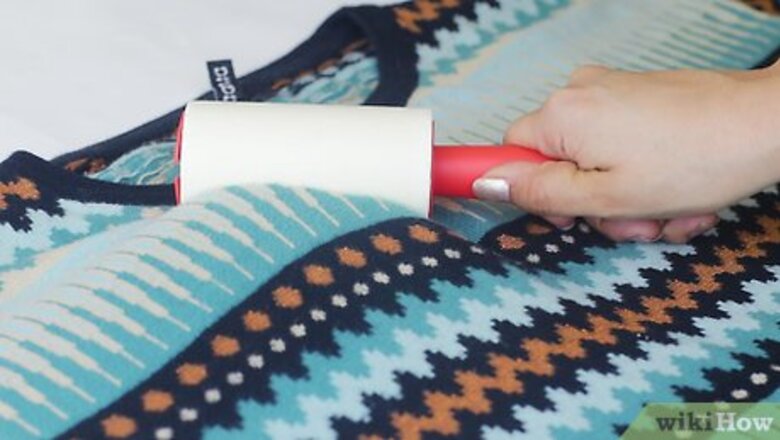
views
Using Adhesion & Abrasion to Remove Lint
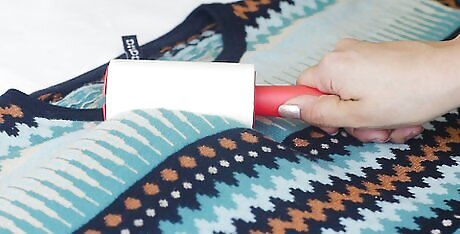
Use a lint roller. You can find them in the laundry department of a supermarket, as well as in fabric stores and pet stores. Peel the wrapper off the tube part, and roll it across the garment. Use and up-and-down motion. As you continue to roll, you will notice that the lint roller is become less tacky. When this happens, simply peel off the sticky sheet to reveal a fresh sticky underneath. Keep rolling and removing sheets until there is no more lint. When you run out of sticky sheets, you can buy a replacement roll of sticky sheets or a whole new lint roller. You can also buy a re-usable lint roller. These rely on a sticky gel material to pick up the lint. When they become dirty, you simply rinse them off using soap and water.
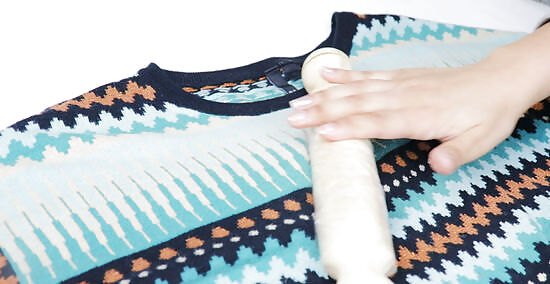
Make a homemade lint roller. You will need a roll of wide, packaging tape and a rolling pin. Unroll a little bit of tape, and place the end against one of the ends of the rolling pin. Make sure that the sticky side of the tape is facing you, and the smooth side is facing the rolling pin. Carefully wrap the tape around the rolling pin in a spiral, like a candy cane, making sure to overlap each turn. When you reach the other end of the rolling pin, cut the tape off. It should hold together by itself, but it if doesn't, you can use a small piece of tape to stick it down to the pin. To use this, simply place the rolling pin on your garment. Hold it by the handles, and roll it up and down until the lint is gone.
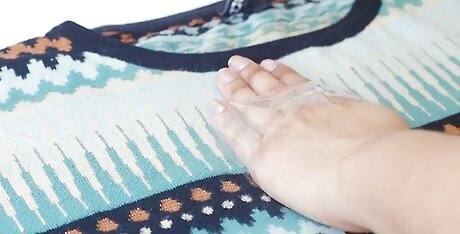
Roll some wide, packaging tape around your hand. Cut a piece of wide tape that is a little more than twice the width of your hand. Hold out your hand with your fingers closed together. Wrap the tape, sticky-side-out around your fingers, and overlap the edges. Lightly pat the affected area with your fingers. When the tape stops being sticky, simply rotate the tape around your fingers until the dirty side is facing you. Continue patting the garment with the fresh side of the tape.
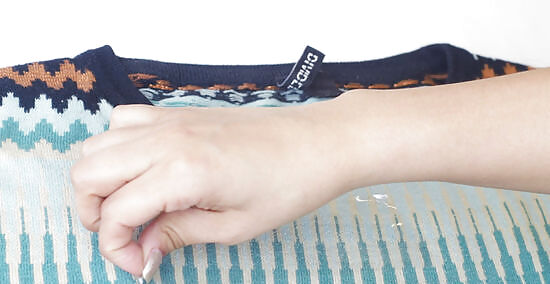
Use a strip of tape. Find some wide tape, and cut a piece that is a few inches long. Place the tape, sticky-side-down, onto the affected area. Make sure that the tape is going in the same direction as the weave of the fabric (usually up-and-down). Rub your finger across the tape to smooth it down, then pull it off. The wider the tape is, the more area you will cover. Try to find something that is about 2 inches (5.08 centimeters) wide.

Consider an electric lint shaver. This is a battery-powered device that you can glide on to your clothes to take care of the lint. Turn on the shaver, and run it gently across the fabric. When you are done, open up the lint compartment, and toss the shaved lint into the trash.
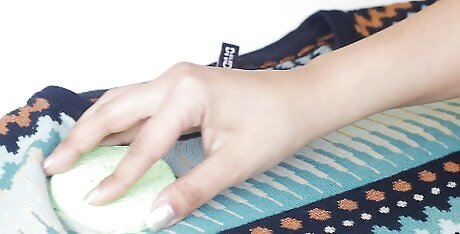
Rub a pumice stone or a "sweater stone" against sweaters and fleece. This can also remove pilling. Make sure that you are going with the weave of the fabric, and not against it. Also, try not to rub too hard, or go over the same area too much. The pumice stone will take off the top layer of the fabric. If you keep going over the same spot, you may get a hole. Avoid using this on cotton or wool. You also won't want to use it on delicate or shiny fabric, such as silk or satin. Most of the lint will be dragged down towards the bottom of the garment. You can use some tape or a lint roller to pull the lint piles off. Consider working on top of a table or tablecloth; this will make cleaning to lint debris a lot easier.
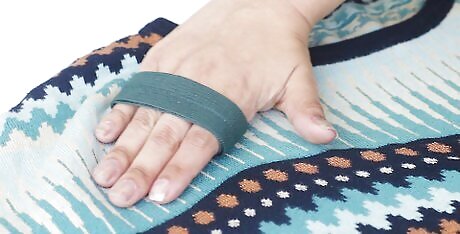
Use Velcro to rub lint away. Purchase some Velcro and cut a piece that is about the width of your hand. Find the rough side with the hooks and set aside the soft, fuzzy side. Rub the Velcro downward against the garment. If the lint gathers at the bottom of the garment, then pick it off using some tape or a lint roller.

Use a clean shaving razor to shave off pills. This is especially effective for lint that is stuck deep into the fabric. Take a shaving razor, and place it near the top of the garment. Gently drag the razor down the fabric a few inches. Lift it off and tap off any excess lint. Continue pulling the razor down the fabric, stopping every few inches to tap the lint off. If you do not have an electric lint shaver, a more inexpensive option would be to use a single-blade razor. Hold the razor at such an angle to skim the fabric surface and get rid of the lint, but be careful not to cut into the cloth and ruin the garment.

Use a damp sponge or scouring pad to buff away lint. Wet a sponge or scouring pad with water, and squeeze it to get rid of the excess moisture. Gently rub the rough side of the sponge or scouring pad against the fabric. Use a downward motion, and work in small sections at a time.
Using Other Methods to Remove Lint
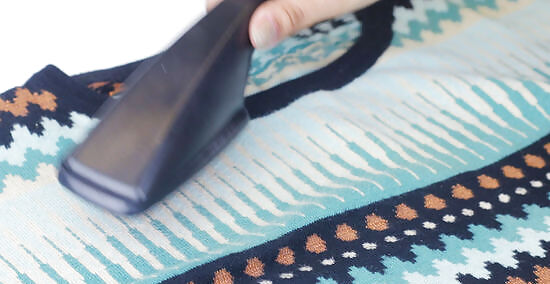
Use a lint brush to buff lint away. They look like an ordinary hairbrush, except that instead of bristles, they have a fuzzy pad instead. The pad feels similar to the soft side of Velcro. Simply rub the lint brush in a single direction across the fabric. Start from the top of the garment, and work your way downward. If there is any lint leftover when you reach the bottom hem, you can pull it off using a lint roller or a piece of tape.
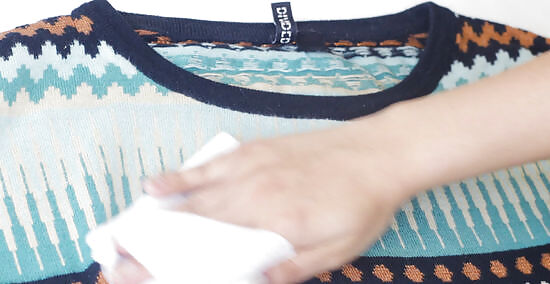
Wipe lint off with a dryer sheet. The dryer sheet will also get rid of static, which attracts lint in the first place.
Rub away lint and pet hairs with a rubber glove. Put on a rubber glove, like the one you would use to wash dishes. Run your hand downward across the fabric towards the hem. The lint and pet hairs will stick to the glove. As you continue to rub the fabric down, the lint and pet hairs will gather in one place. You can wipe them off using the glove, or you can pick them off with a piece of tape or a lint roller. EXPERT TIP Dishwashing gloves are great for removing lint from fabric, and they work on upholstery, as well! Susan Stocker Susan Stocker Green Cleaning Expert Susan Stocker runs and owns Susan’s Green Cleaning, the #1 Green Cleaning Company in Seattle. She is well known in the region for outstanding customer service protocols — winning the 2017 Better Business Torch Award for Ethics & Integrity —and her energetic support of green cleaning practices. Susan Stocker Susan StockerGreen Cleaning Expert
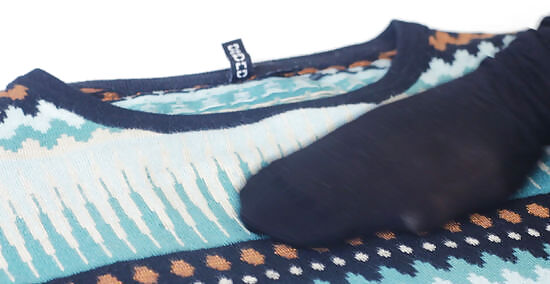
Use an old nylon or pantyhose. Stick your hand into a nylon sock or a pair of pantyhose, like you are putting on a glove. Make sure that your fingers are touching the toe part. Run your hand lightly across the fabric. The lint will stick to the nylon and pantyhose.
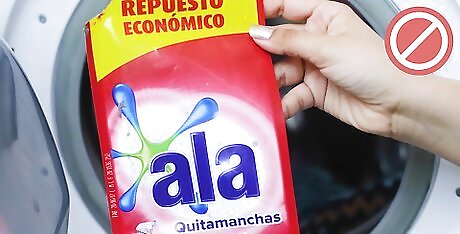
Wash the clothes again, but without detergent. If you take your clothes out of the washer and see that there is lint on them, put them back in and wash them again. Do not use detergent for this second wash. After the cycle is done, take the clothes out, and shake them out to loosen any leftover lint. Dry the clothes in the dryer as you normally would.
Preventing Lint from Getting on Your Clothes
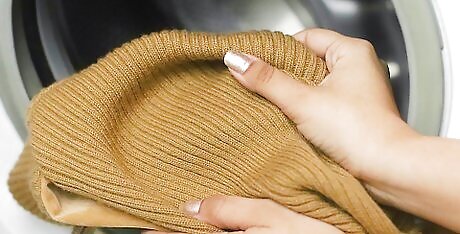
Know what causes lint, and wash those items separately. Some items, such as chenille, towels, and flannel are more likely to shed lint in the washer than others. Once you know what the culprit is, wash it separately the next time you do laundry. This will keep lint from transferring to the rest of your clothes in the wash.
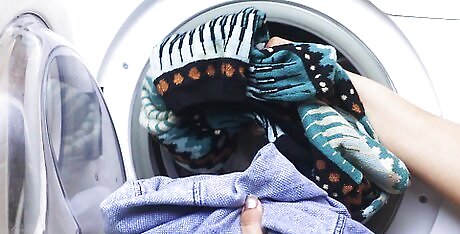
Know what items attract lint, and wash them separately. Some fabrics, such as corduroy and velvet, tend to attract lint more than other fabrics. It might be a good idea to wash them separately, or at least apart from fabrics you know shed a lot of lint. If you cannot wash the items separately, try to turn the items that attract lint inside out before you toss them into the wash.
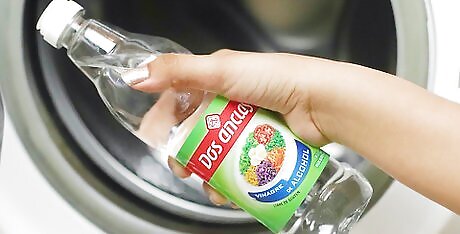
Add ¼ cup (60 milliliters) of white vinegar to the washing machine. The vinegar will help remove lint from clothing. It will also help keep the lint from sticking as much. Vinegar will also help deodorize laundry.
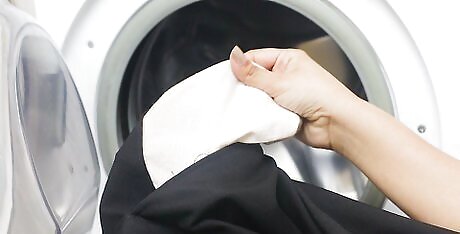
Check and empty pockets before washing the garment. Items, such as tissues, will deteriorate in the washer and dryer, and cause even more lint. Be sure to check the pockets and take out any scraps of tissue, fabric, or paper.
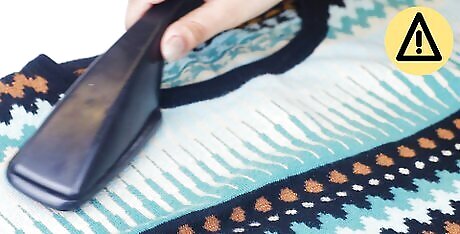
Try to de-lint items before washing them. If something has a lot of lint on it, try to remove the lint using a lint roller before you toss it into the wash. If you don't remove the lint, it will just transfer to everything else.
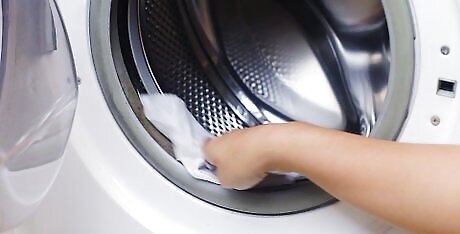
Wipe down the inside of your washing machine after washing a lint-shedding item. Whenever you wash something you know sheds a lot of lint, wipe down the drum of your washer with a towel. If you don't do this, any residual lint may get onto the rest of your clothes during the next wash.
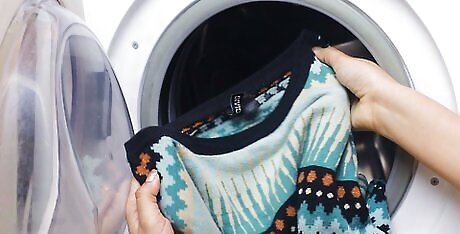
Shake items after washing, before you put them into the dryer. Take each garment, and give it a good shake before you toss it into the dryer. This will help knock off any lint that may have gotten onto the fabric in the washer.

Remember to use dryer sheets in the dryer. You will only need half a sheet for a small load, and a full-sized sheet for a regular load. The dryer sheet will help reduce static, which is what causes lint to stick to clothing in the first place.
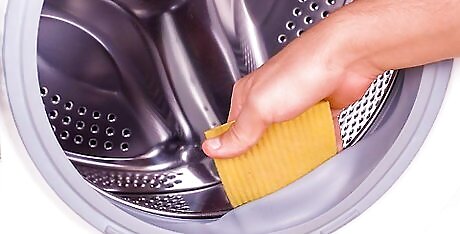
Clean the lint trap in your dryer after each cycle. When you open your dryer, there should be a tray inside the door, or just inside the machine. If you can take out the try, do so, and tap the lint off into a trashcan. If you can't take the tray out, scoop the lint off with your fingers. If you don't do this, that lint may get onto your clothes the next time you dry them.
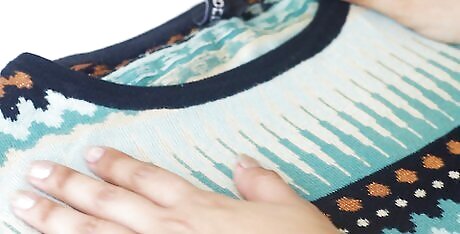
Try to air-dry instead. Dryers catch a lot of lint, and if they are not clean, they can transfer the lint to your clothes. Air-drying clothing reduces lint. The wind may also help knock off any specks of lint. You can dry your clothes on a clothing line, or on a clothing rack. The sunlight and fresh air will also help kill any odor-causing bacteria, leaving your clothes smelling nice and fresh.
















Comments
0 comment